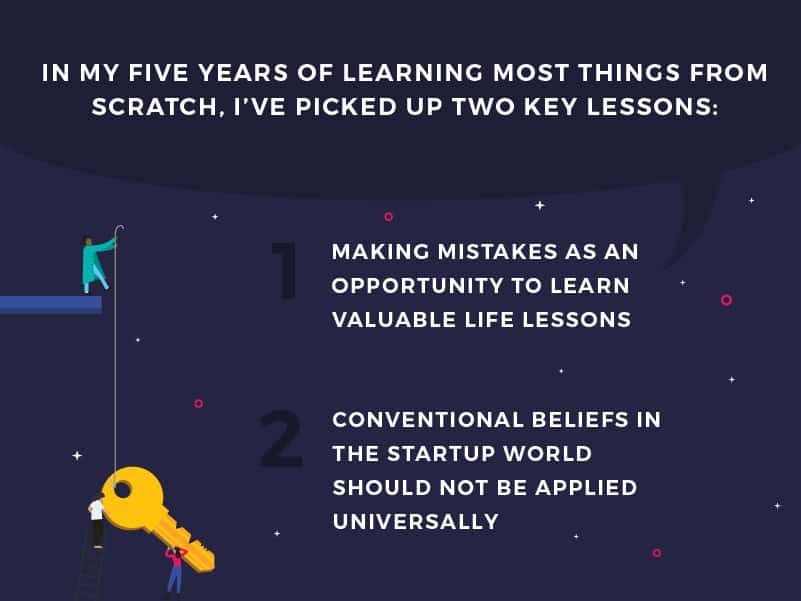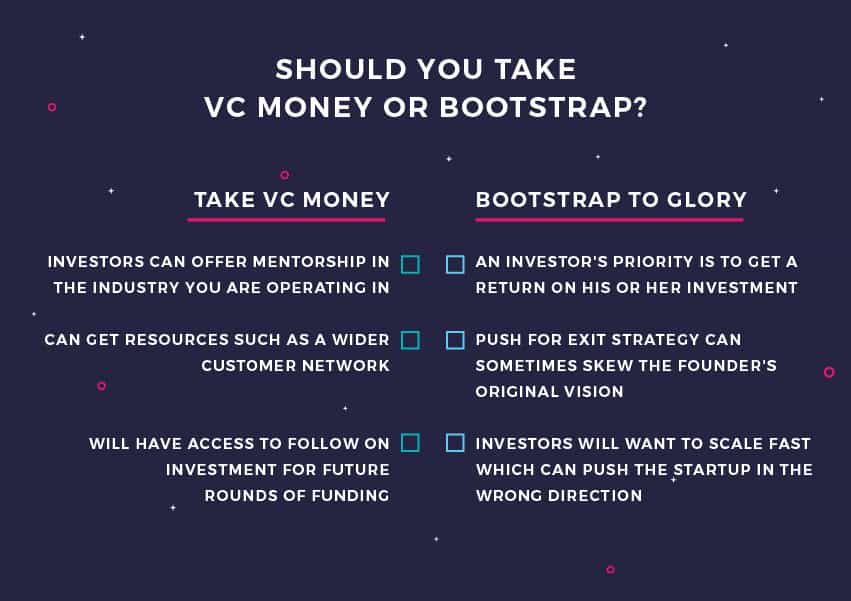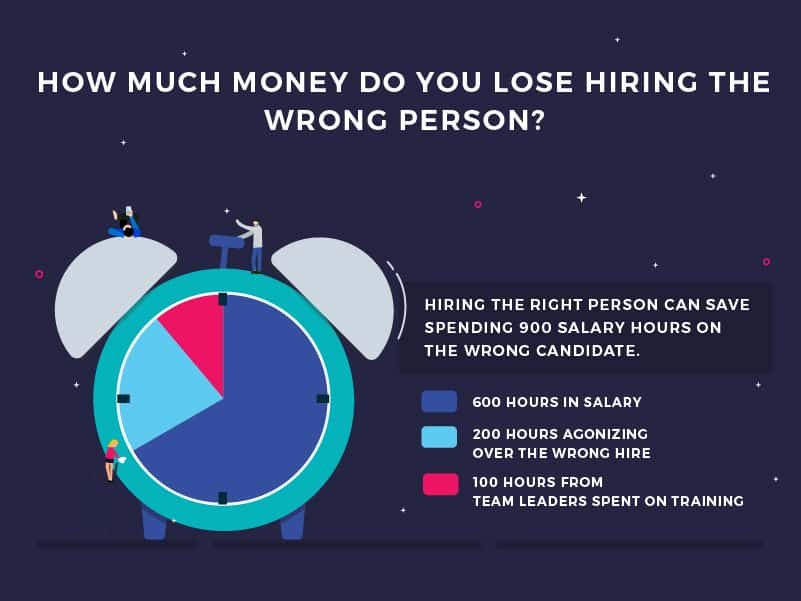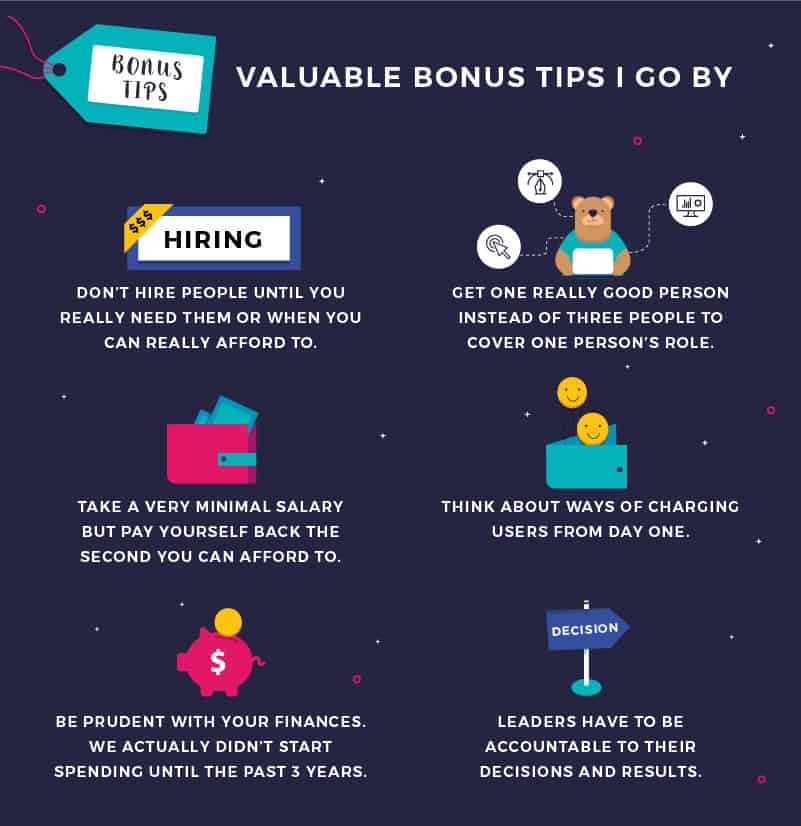Five years ago, I took the leap into the entrepreneurial realm with my then-boyfriend now-husband Andrea. We were first time founders who really didn’t know what we were doing, saying good riddance to the corporate world in favor of creating a people-focused business.

Raising a Seed Round From a Top VC
When you’re an early stage startup, it seems to be common sense that you should focus on raising that $500,000 seed round from a big name VC.
After all, conventional wisdom dictates that if you can rope in a solid investor, you’ll have the mentorship, resources, access to a wider customer network, and follow on investment needed to grow.
While I’m aware of the great value that investors can offer, I also know that an investor’s priority is to get a return on his or her investment.
[clickToTweet tweet=”An investor’s push for an exit strategy can sometimes skew the founder’s original vision.” quote=”An investor’s push for an exit strategy can sometimes skew the founder’s original vision.”]
In 2014, we made a few trips to Singapore with the intention of raising VC money. We thought that it was essential to our growth as it seemed like everyone else around us was busy fundraising!
We were keen to look for investors that understood the SaaS landscape and could add value by providing connections or mentorship, instead of just looking for an exit.
The term sheets started to come in when we met with an investor who offered the following advice:
Investor: How much did you say you had in your bank?
Us: $X million.
Investor: How much are you raising?
Us: $Y million.
Investor: If your burn rate is xx%, and you’re getting a net profit of yy%. Why are you raising? Just keep your equity and try spending the money in your bank as if it was money from investors.
We took that advice and decided forego venture funding and instead, bootstrap our way to glory. Growth is important, but so is culture so I wanted to make sure that I stayed true to my original vision to build a people-focused company.
You Should Hire Fast, But Also Fire Fast
This is one of the common adages of most HR startup people. What actually ends up happening is when the wrong hire comes on board too quickly, his or her exit from the company becomes a lengthy and painful process.
This usually has to do with the pressure that comes with a fresh round of funding. Investors expect results, which is why there is the tendency to hire quickly at this stage.
I cannot stress the importance of being patient and hiring slow.
[clickToTweet tweet=”Our recruitment processes is deeply rooted in the belief that a good culture fit is equal to technical skill.” quote=”Our recruitment processes is deeply rooted in our belief that a good culture fit is equal to technical skill.”]
For those that need hard and fast data to back up their hiring decisions, take this with you: As per my estimates, an extensive hiring process that results in finding the right person can save us the cost of dropping 900 salary hours on the wrong candidate.
The breakdown is 600 hours in salary, 100 hours from team leaders spent on training, and 200 hours agonizing over the wrong hire.
All Onsite or All-Remote, Nothing in Between
The problem with scaling fast is that we needed good people as soon as possible. We have an interesting story about how we went from an onsite to a semi distributed model, which was a practice that is generally frowned upon.
Marta, our head of marketing today, used to work from Piktochart’s office in Penang. After a year, she wanted to be closer to family in Europe and requested a remote working arrangement.
So many questions ran through my mind at that point: “Would we be able to pull this off? What if Marta starts feeling isolated? Would everyone else in Penang want to go remote?”
We decided to go ahead and test it out anyway as we trusted Marta.
From there, we cultivated a culture of fairness, even though 20% of our company works remotely.
How we did this, in a nutshell, was calculate how much we spent on each person at HQ in terms of company perks, rent, utility bills, and office consumption. We then allocated the same amounts into things like a monthly coworking space stipend and well-being allowance for our remote workers.
We also made sure to give equal amounts of trust and autonomy to all team members, whether they worked in HQ or remotely, so everyone feels they have an equal say in all company matters. Every announcement that was made had two audiences and we were aware of that.
We organized monthly virtual hangouts, collected feedback via Officevibe on top of Slack and ensured that we kept a pulse check on how everyone in the company was feeling.
Open an Office Where Your Customers Are
Back in 2014, Piktochart was in its growth stage with healthy margins and we were clocking five-digit user acquisition rates every single month. At this point, commonly-held startup beliefs would guide us towards enterprise market expansion in order to win in the “big money” segment.
This would have required us to spend around $2 million to open an office in the US where the bulk of our users were, and to also hire a local sales team. We decided against it and refocused efforts on building our product and business from Penang, Malaysia.
What we also did, on top of staying put in home base, was eventually open up remote working arrangements for our marketing, design, and customer support teams. This helped us hire the best people for the our creative and communications roles, and to also ensure that our users had around-the-clock support through a cloud based contact center but with real people in the same area where our customers were.
On top of those four debunked myths, I also wanted to share some valuable bonus tips that I now swear by.
Enjoyed this story? We recently launched a podcast on the future of work and the first episode tells Piktochart’s story on how we grew into a semi-distributed team. Listen to it here!







